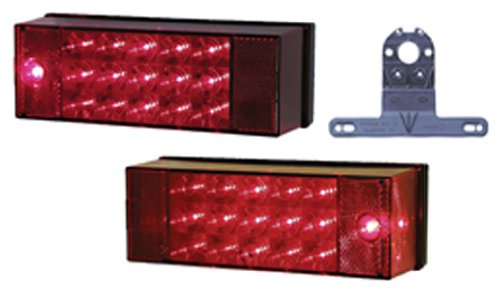I'm not a fan of bearing buddies. They maintain a reservoir of grease which gets pushed into the bearing when you reload them. Most times I remove the bearing buddy and grease the bearings the old fashion way.
But, since it is what you have, it's best to go ahead and use them with some modifications:
Jack up the wheel off the ground and tap the bearing buddy out of the tapered outer flange by using a hammer to tap inward on the bearing buddy as you rotate the tire. It will tip sequentially in the flange until it comes out. If you don't want to jack the wheel up, you can just tap around in a circle on the bearing buddy and work it out of the hub flange.
Now, the bearing buddy is tapped out of the hub, and you see the axle nut and all the goo on it. Look inside the bearing buddy and see all the old grease in there too. Take a bunch of paper towels, and clean all that existing grease off the axle, nut, cotter pin, and inside of the bearing buddy. This is old grease you do not want to force into the bearings.
At this point, I would re-grease the old way, by removing the cotter pin, nut and bearings from the hub and clean and grease by hand. But if you want to use the bearing buddy, you can get a grease gun and some quality marine grease. After the bearing buddy is cleaned out, put it back on the hub and tap it squarely into the hub flange again. Tap around the outer rim of the bearing buddy to seat it flush into the hub.
Notice the spiral spring on the inner housing of the bearing buddy. This is to maintain a constant grease pressure on the bearings and such. Note, that as you push grease into the bearings and axle, from the outer hub, you are actually pushing OLD grease from the outer bearing through the hollow hub and into the inner bearing, which is why I don't like them. Anyway, put the grease gun on the zerk fitting of the bearing buddy, and start pumping the gun. Watch the plate with the zerk fitting begin to move outward as pressure builds from the new grease going into the assm. Look at the inner hub to make sure you don't have grease spooging out of there from a deformed or bad inner grease seal. Once the plate and zerk fitting move out about 1/2 - 3/4", stop filling with grease.
Rotate the tire a few times and listen for any crunchy sounds. If none, you are done and go to the other side. If you hear anything out of the ordinary, remove the bearing buddy and the axle nut and take the hub off the axle, and clean it all with gas, then start over.
<edit: forgot something. With the wheel off the ground, grasp the tire with both hands at left and right. Using a twisting motion, check the play in the bearings. It might move very little, or you may hear a clicking as you twist left and right. If it's sloppy, and there is quite a bit of play, you need to remove the bearing buddy again, remove the cotter pin, and tighten the nut just a bit to make sure the hub is not sloppy loose on the axle. Don't overdo it, or you'll create too much heat and it'll seize. Use a new cotter pin(or bendy washer). It's hard to describe the tightness by feel, but snug is good while letting the wheel still move freely.>



 Ummmm.
Ummmm. 



 you're PIC, your call. Me, I would just change them out for a fresh set of tires. I hate trailer problems.
you're PIC, your call. Me, I would just change them out for a fresh set of tires. I hate trailer problems.
